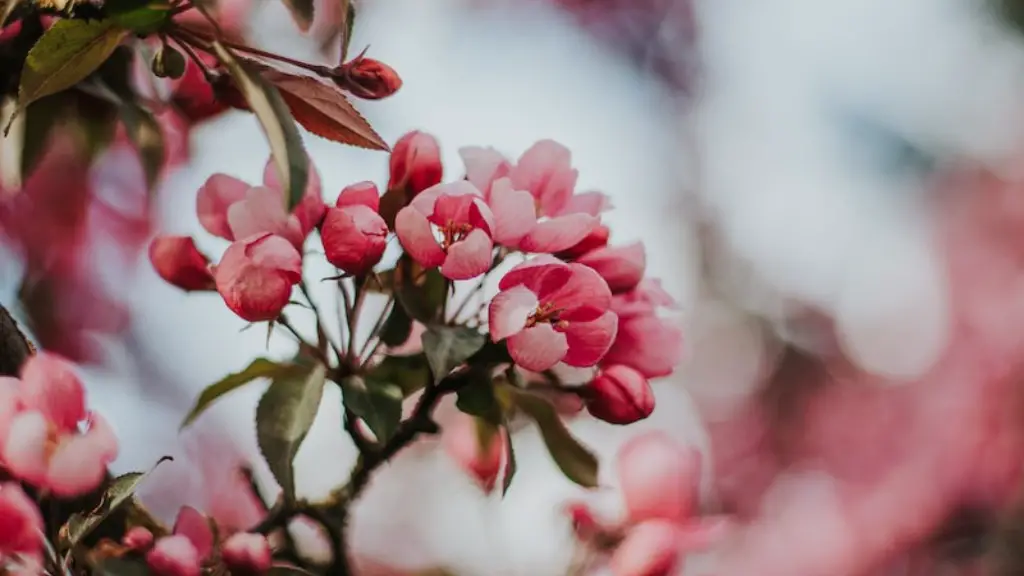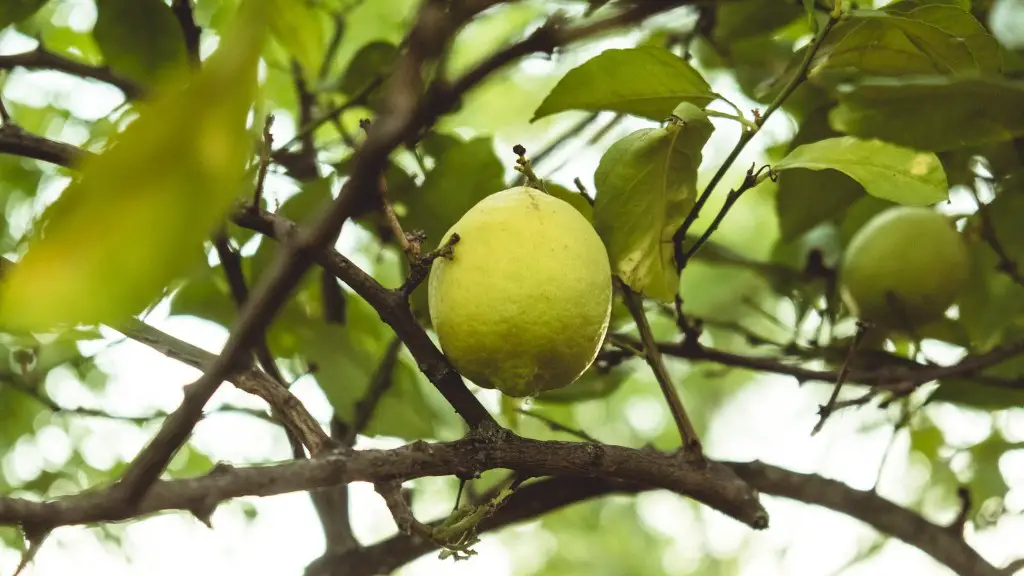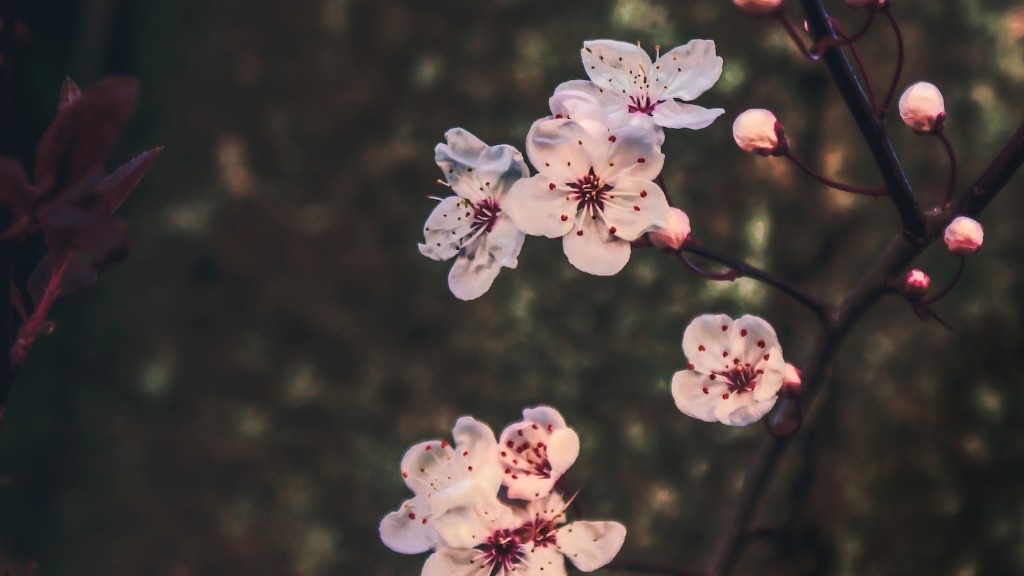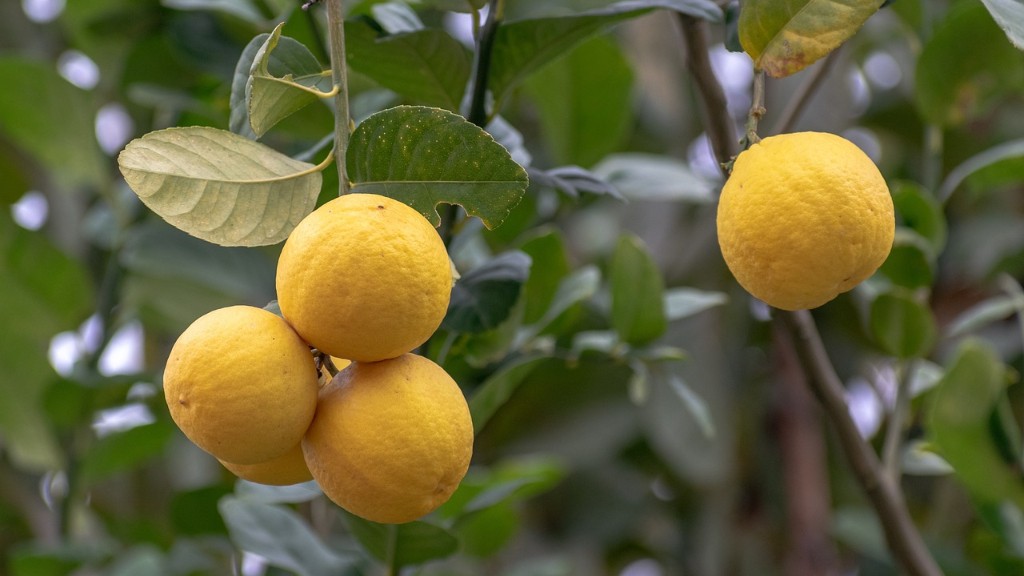Growing an apple tree from a seed is a rewarding experience. You don’t need a green thumb or years of gardening experience to complete the task, but some patience and care will go a long way to ensure success. Here’s how to get started:
First, lay out a tarp and moisten it with a garden hose. Place the apple seeds on the tarp and sprinkle with a thin layer of soil. Keep the topsoil moist by misting it regularly with a spray bottle. Alternatively, you can start the seeds in pots and then transplant them outdoors once the seedlings are established.
Next, cover the seeds with compost, worm castings, or store-bought organic soil. Be sure to leave a half-inch gap between the soil and the seed for air to circulate. Cover the container with clear plastic wrap and place it in a sunny spot. The plastic wrap helps keep moisture levels constant, providing the best environment for your newly planted seeds.
Once the seedlings emerge, cover them with a thin layer of soil to promote more root growth. Water the seedlings lightly and keep the soil moist, but not soggy. Don’t forget to remove the plastic wrap covering the container!
When the seedlings are a few inches tall, it’s time to transplant them into their permanent home. Dig a hole twice as wide and deep as the root ball and mix compost, worm castings, or organic fertilizer into the soil. Gently remove the seedling from the container and place it in the hole. Fill the hole with soil and water until it’s slightly damp.
Finally, keep an eye on your new tree for signs of disease or pests. Healthy apple trees need regular water and fertilizer during the growing season. Prune and fertilize your trees in late autumn and mulch with compost or straw. With proper care, your sapling will become a full-grown apple tree in just a few years.
What Apple Trees Need
Apple trees require ideal conditions in order to thrive. Ensure they’re planted in well-drained soil – avoid areas where water pools or stands. Apple trees also require ample sunlight – select a spot in your garden that gets at least six hours of sunlight each day.
Apple trees need a steady supply of nutrients in order to stay healthy. Mature trees should be fertilized twice a year with a nitrogen-rich fertilizer, in the spring and fall. Compost is an effective natural fertilizer that will supply trees with vital nutrients.
Above all, apple trees need lots of water during the growing season. How much water will vary based on your climate, but a general rule of thumb is to provide water once a week. Soak the soil, not the leaves, to avoid fungus and disease.
Make sure to use a balanced fertilizer near the base of the tree and supply supplemental nutrients throughout the season if your soil is low in nitrogen or other essential minerals. Manure tea is a fantastic way to provide a boost of nutrients to an apple tree, as it releases beneficial microorganisms into the soil that help break down organic matter and make nutrients more readily available.
It’s vital to remove yellow or browning leaves that are blocking sunlight and nutrients from the fruit-producing parts of the tree. Pruning should also be done regularly to rid the tree of dead or damaged branches and ensure the apple tree is in good condition.
How To Care For the Apple Tree
Like most fruit trees, apple trees need regular care to stay healthy and produce abundant fruit. Pruning is one of the most important tasks for apple trees. Pruning should be done in the late winter months when the tree is still dormant. Start with removing diseased or dead branches, then shape the tree’s canopy by removing lower branches and any branches that are competing for space.
The next step is controlling pests and diseases. Apples are susceptible to fungal diseases such as apple scab. Make sure to clean up fallen leaves and fruit to reduce the risk of fungal infections. Other pests and diseases such as coddling moth, fire blight and powdery mildew can also be controlled with regular pruning and spraying of beneficial organisms such as beneficial nematodes.
Healthy apple tree soil is essential for proper growth and fruit production. Before planting, adjust the pH of the soil to around 6.0 to 6.5. During the growing season, add organic matter such as compost or manure to the soil around the tree. This will help keep the tree healthy and ensure an abundant harvest.
Apple trees also need regular watering. Water when the soil is dry, but avoid overwatering. During the flowering season, water heavily to encourage the growth of fruit buds. Avoid overhead watering if possible, as it can encourage fungal growth and spread diseases.
Protect your apple trees from the winter cold with a thick blanket of mulch. Organic mulches such as wood chips, straw or leaves will help the tree retain moisture and keep the roots warm. Prune any broken or damaged branches and trim back the canopy to reduce ice and snow buildup.
Harvesting And Storing Apples
Finally, it’s time to harvest! Apples are usually ready for harvest two to three months after blooming. Apples should be harvested when they’re full-sized and a deep, institutional color. Select apples that are free from blemishes and bruises. To avoid damaging the tree, use clippers to gently detach the apples from the branches.
To store apples, lay them out in a single layer and keep them in a cool, dark place. Never store apples directly on the ground, as this will cause them to spoil quickly. You can also wrap the apples in newspaper and store them in a refrigerator. Apples kept in this way can last up to two months.
Whether you’re harvesting apples for yourself or selling them at a farmer’s market, apple trees make a great addition to any garden. With some patience and the right care, you’ll soon be harvesting delicious, homegrown apples right in your backyard!
Growing Apple Trees From Grafted Trees
Growing apples from grafted trees is another option for those looking to grow their own apples. Grafted trees also known as scions are branches from an already existing apple tree, grafted onto a rootstock. This process is done by expert horticulturists, who use their knowledge and skill to create stronger, disease-resistant trees.
Grafted trees require the same care as regular trees, although they are usually more vigorous and bear fruit sooner. When buying a grafted apple tree, make sure it has been planted in soil with good drainage and fertilise it regularly. Early pruning is essential, as this prevents unhealthy or overgrown branches.
Pollination is also important for apple trees, although some varieties are self-pollinating. If you’re growing multiple trees, they should be planted near each other in order for cross-pollination to take place. Bees and other pollinators are essential for a successful harvest, so make sure to create a bee-friendly environment in your garden.
Finally, before you harvest your apples, it’s important to know when they’re ripe. The best way to determine when an apple is ready is to carefully examine the colour and texture of the fruit. Apples that are ripe for harvesting should be firm and slightly sweet to the taste. When in doubt, pick one early since apples will continue to ripen after being harvested.
Other Ways To Grow Apple Trees
While most apple trees are grown from seeds or grafted trees, there are also other options. There are various species of dwarf apple trees available, which are ideal for smaller gardens or pots. Dwarf trees are grafted onto dwarf rootstocks and have a restricted growth pattern, meaning they remain small and compact.
Apple trees can also be propagated using a technique known as layering. The process involves covering a low-hanging branch of an existing tree with soil or compost and then anchoring it with a stake. This encourages the branch to develop a new root system, allowing it to be removed from the parent tree and planted in a new location.
Another method of propagation is called “budding”. This involves inserting a bud from a desirable apple tree into the bark of another tree. The bud then produces the desired variety, giving the grower a full-size apple tree.
Grafting, layering and budding are all excellent ways to grow apple trees, but they can take years to bear fruit. For those looking for an easier and faster way to get started, purchasing a grafted or pre-made apple tree is the ideal option.




